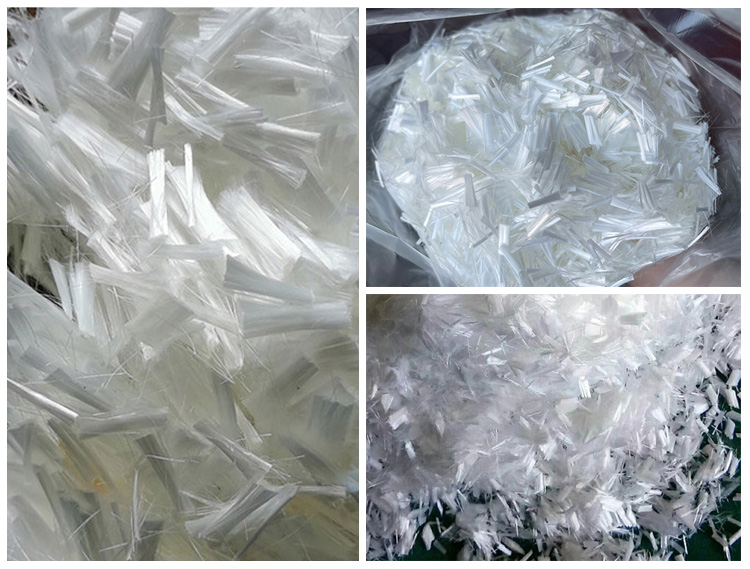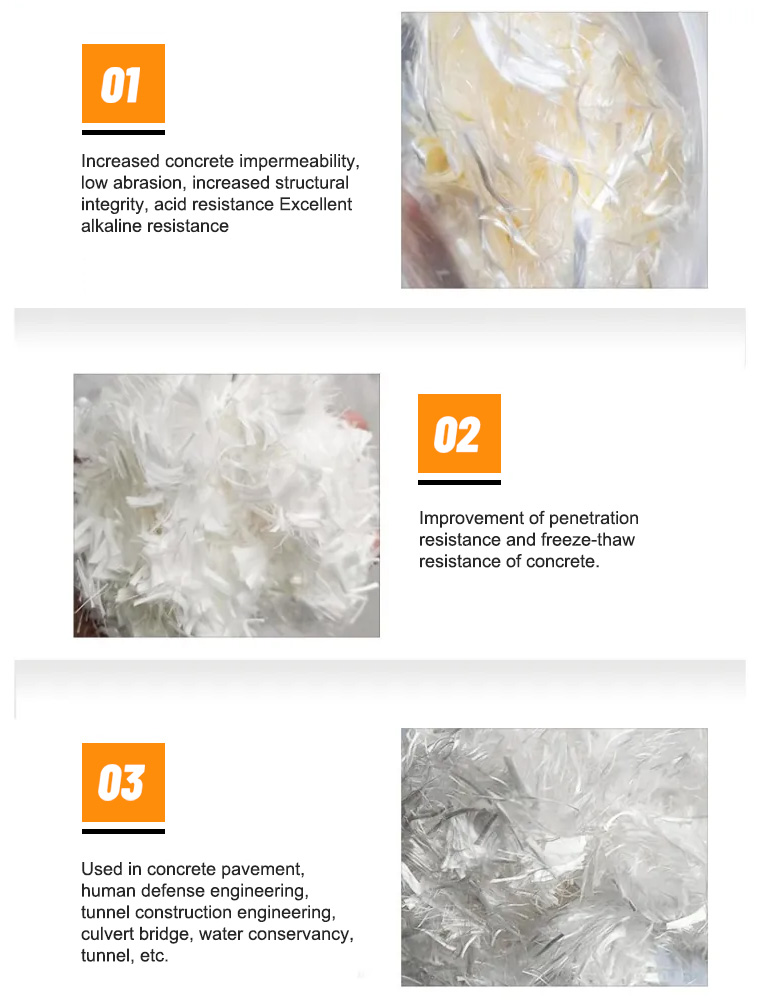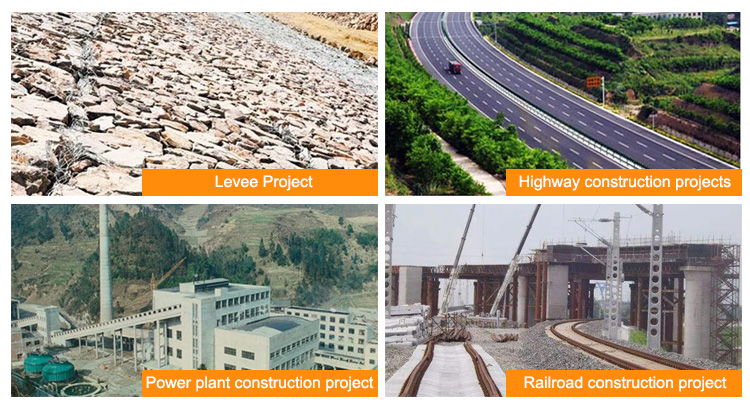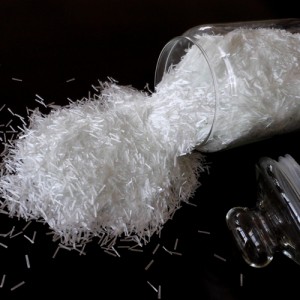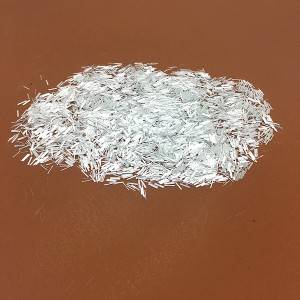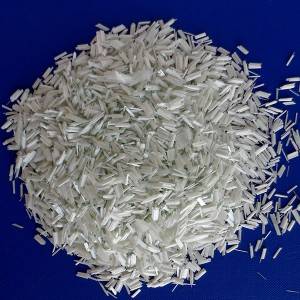Polypropylene(PP)Fiber Chopped Strands
PRODUCT INTRODUCTION
Polypropylene fiber can significantly improve the bond performance between fiber and cement mortar, concrete. This prevents early cracking of cement and concrete, effectively prevent the happening and development of mortar and concrete cracks, so to ensure uniform exudation, prevent segregation and hinder the formation of settlement cracks.The experiments show that mixing 0.1% volume content of fiber,the crack resistance of concrete mortarwill increase 70%,on the other side,it also can significantly improve the permeability resistance up to 70%. Polypropylene fiber (short-cut strands of very fine denier monofilament) is added to the concrete during batching. Thousands of individualfibers are then evenly dispersed throughout the concrete during the mixing process creating a matrix-like structure.
ADVANTAGES & BENEFITS
- Reduced plastic shrinkage cracking
- Reduced explosive spalling in fire
- Alternative to crack control mesh
- Improved freeze/thaw resistance
- Reduced water & chemical permeability
- Reduced bleeding
- Reduced plastic settlement cracking
- Increased impact resistance
- Increased abrasion properties
PRODUCTS SPECIFICATION
| Material | 100%Polypropylene |
| Fiber Type | Monofilament |
| Density | 0.91g/cm³ |
| Equivalent Diameter | 18-40um |
| 3/6/9/12/18mm | |
| Length | (can be customized) |
| Tensile Strength | ≥450MPa |
| Modulus of elasticity | ≥3500MPa |
| Melting Point | 160-175℃ |
| Crack Elongation | 20+/-5% |
| Acid /alkali Resistance | High |
| Water Absorption | Nil |
APPLICATIONS
◆ Less expensive than conventional steel mesh reinforcement.
◆ Most small builder, cash sales and DIY applications.
◆ Internal floor-slabs (retail stores, warehouses, etc.)
◆ External slabs (driveways, yards, etc.)
◆ Agricultural applications.
◆ Roads, pavements, driveways, kerbs.
◆ Shotcrete; thin section walling.
◆ Overlays, patch repair.
◆ Water retaining structures, marine applications.
◆ Security applications such as safes and strongrooms.
◆ Deep lift walls.
MIXING DIRECTIONS
The fiber should ideally be added at the batching plant although in some instances this may not be possible and addition at site will be the only option. If mixing at the batching plant, fibres should be the first constituent, along with half the mixing water.
After all the other ingredients have been added, including the remaining mixing water, the concrete should be mixed for a minimum of 70 revolutions at full speed to ensure uniform fiber dispersion. In the case of site mixing, a minimum of 70 drum revolutions at full speed should take place.







